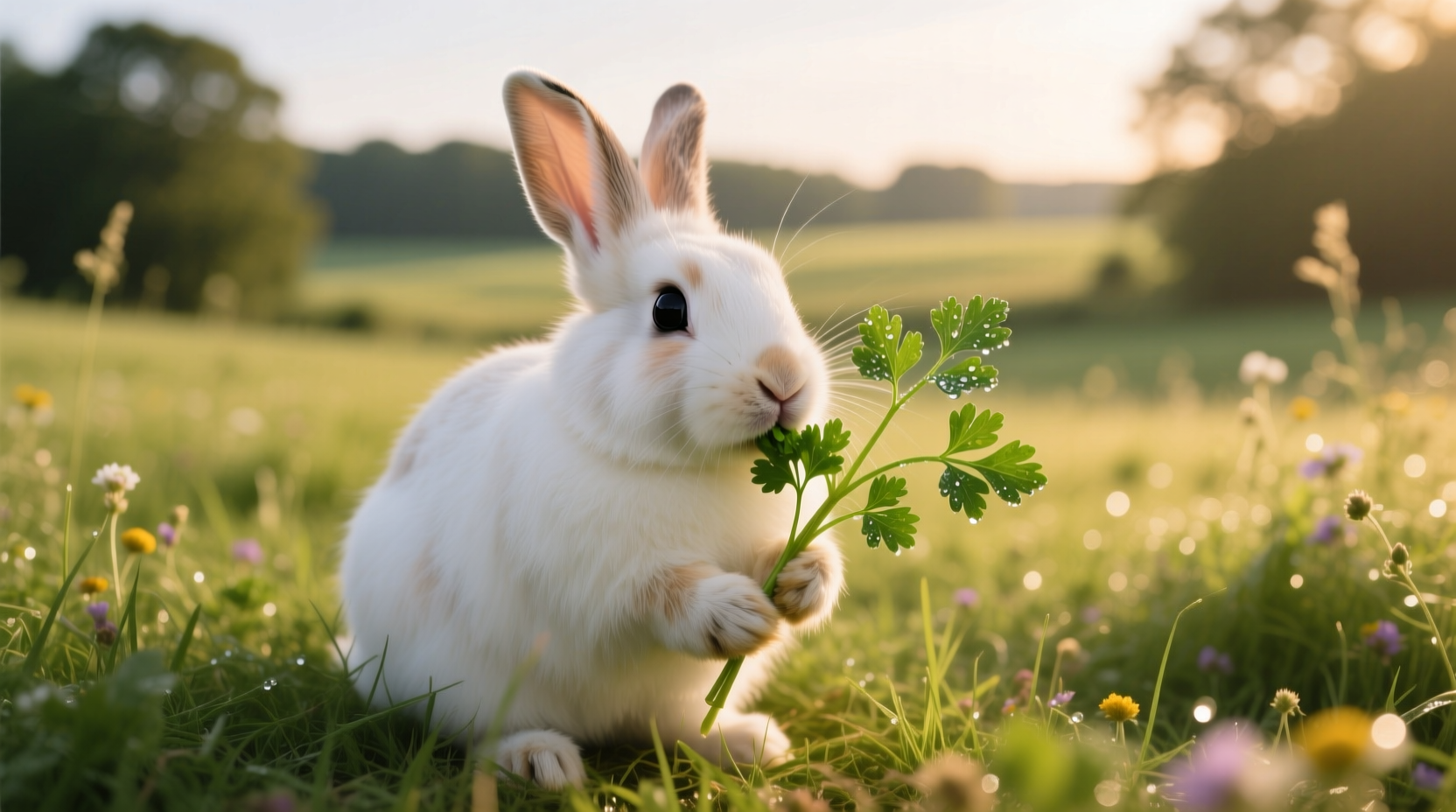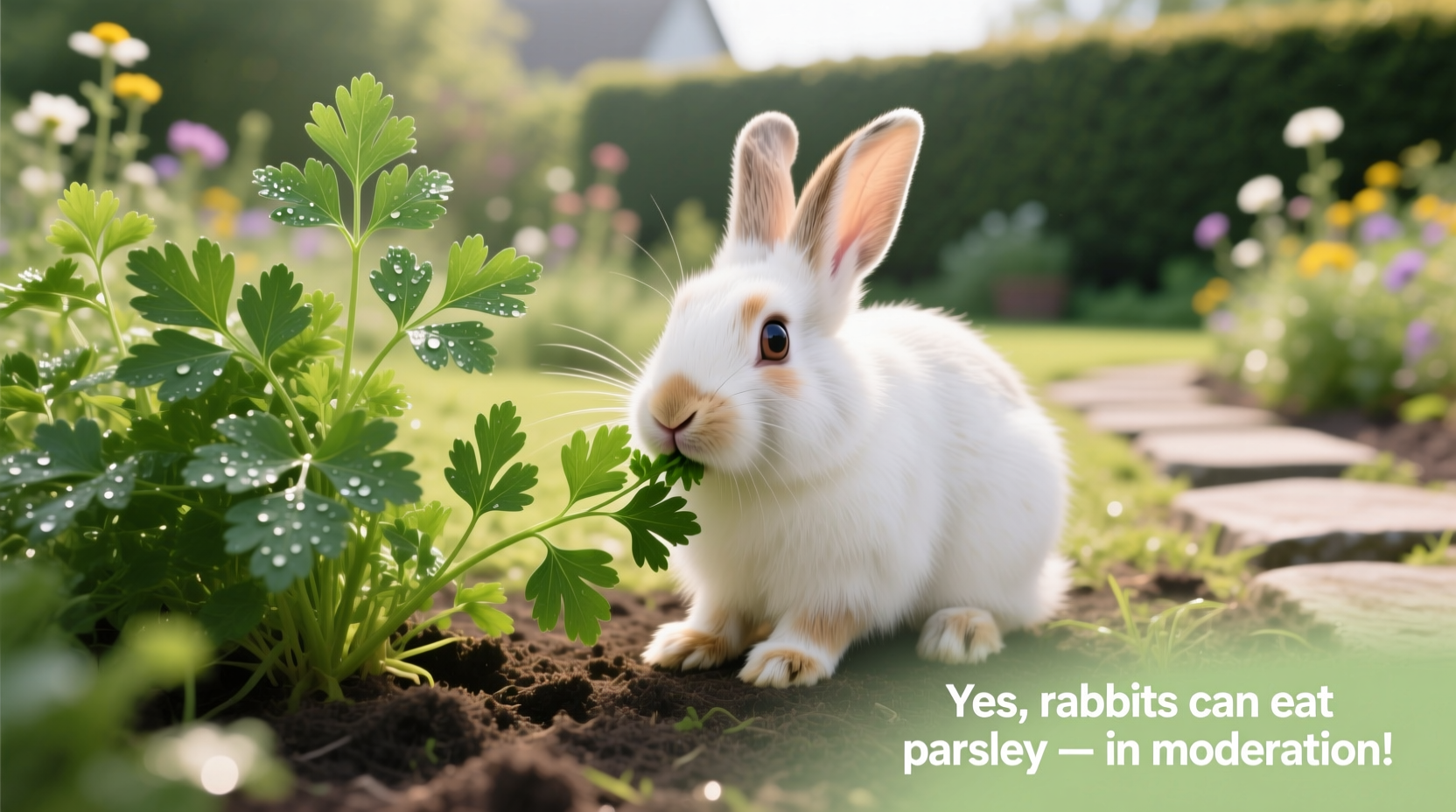As a rabbit owner, you've probably wondered whether that bunch of parsley in your fridge is safe for your hopping companion. Many new rabbit parents accidentally overfeed this common herb, not realizing its potential risks despite being nutritionally beneficial. Let's explore exactly how to incorporate parsley safely into your rabbit's diet while avoiding common pitfalls.
Why Parsley Benefits Rabbits (When Fed Properly)
Parsley packs a powerful nutritional punch that supports rabbit health when served in appropriate portions. This leafy green contains:
| Nutrient | Amount per 100g | Rabbit Health Benefit |
|---|---|---|
| Vitamin A | 421 μg | Supports vision and immune function |
| Vitamin C | 133 mg | Essential for tissue repair and immunity |
| Calcium | 138 mg | Necessary but problematic in excess |
| Dietary Fiber | 3.3 g | Critical for digestive health |
Data sourced from USDA FoodData Central shows parsley's impressive nutrient profile. However, that same nutritional density creates potential problems when overfed.
When Parsley Becomes Risky: Critical Limitations
While parsley offers valuable nutrients, its high calcium content creates specific health concerns for rabbits. Unlike humans, rabbits absorb nearly 100% of dietary calcium, making them prone to bladder sludge and urinary stones when calcium intake exceeds requirements.
According to the House Rabbit Society, a leading rabbit welfare organization, these specific scenarios require avoiding or strictly limiting parsley:
- Rabbits with existing urinary tract issues
- Young rabbits under 6 months old
- Dwarf breeds prone to calcium metabolism problems
- Rabbits already consuming other high-calcium greens
Step-by-Step Introduction Timeline for Safe Feeding
Introducing new foods requires careful monitoring. Follow this veterinary-recommended timeline when adding parsley to your rabbit's diet:
- Day 1: Offer one small leaf (about 1 inch)
- Days 2-3: Monitor for normal digestion and stool formation
- Day 4: If no digestive upset, offer two leaves
- Week 2: Gradually increase to appropriate serving size
- Week 4: Maintain consistent feeding schedule
This gradual introduction process, recommended by American Veterinary Medical Association guidelines, helps identify any adverse reactions before they become serious.
Perfect Parsley Portions: Size Matters
Getting portion sizes right prevents health complications while providing nutritional benefits. The ideal serving depends on your rabbit's size:
- Small breeds (under 3.5 lbs): 1 sprig (about 10 leaves) once weekly
- Medium breeds (3.5-6 lbs): 1-2 sprigs twice weekly
- Large breeds (over 6 lbs): 2-3 sprigs 2-3 times weekly
Always wash parsley thoroughly to remove pesticides. Organic varieties are preferable when available. Never feed wilted or yellowing parsley, which indicates spoilage.

Balancing Your Rabbit's Leafy Green Rotation
Parsley should be just one component in a diverse salad mix. Rotate through these safer alternatives to prevent overexposure to any single nutrient:
- Romaine lettuce (excellent base green)
- Cilantro (similar nutrients with lower calcium)
- Endive (excellent for hydration)
- Radish tops (rich in vitamin C)
- Watercress (nutrient-dense alternative)
Remember that hay should comprise 80% of your rabbit's diet, with fresh greens making up only about 15% of daily intake. The remaining 5% should be high-quality pellets.
Warning Signs of Overconsumption
Watch for these symptoms indicating your rabbit may have consumed too much parsley:
- Cloudy or thick urine
- Straining during urination
- Reduced appetite
- Smaller than normal fecal pellets
- Excessive licking of genital area
If you notice these symptoms, discontinue parsley immediately and consult your exotic veterinarian. Early intervention prevents serious urinary complications.
Expert-Recommended Feeding Schedule
For optimal health, follow this weekly vegetable rotation that includes parsley without overexposure:
- Monday: Romaine lettuce + cilantro
- Tuesday: Endive + dandelion greens
- Wednesday: Parsley + radish tops
- Thursday: Watercress + basil
- Friday: Romaine lettuce + mint
- Saturday: Cilantro + carrot tops
- Sunday: Rest day (hay only)
This rotation, endorsed by veterinary nutritionists at The Ohio State University College of Veterinary Medicine, ensures balanced nutrition while minimizing risks from any single food source.











 浙公网安备
33010002000092号
浙公网安备
33010002000092号 浙B2-20120091-4
浙B2-20120091-4